Cyclamen European: characteristics, features of reproduction and cultivation
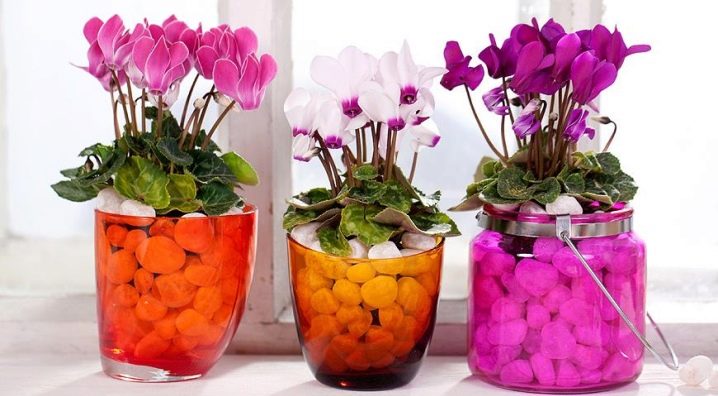
Flowering plants are an adornment of both personal plots and home greenhouses. In European countries, you can often see a very beautiful plant: European cyclamen, which breeders were able to adapt to home conditions for regions with unfavorable climatic conditions. The fragrant and beautiful flower has gained popularity in many countries around the world and is widely used by florists to decorate rooms.
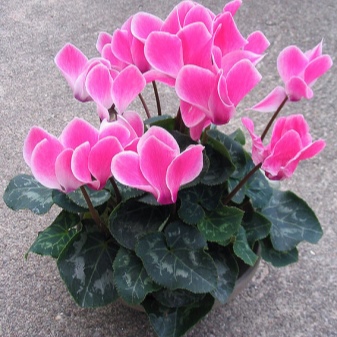
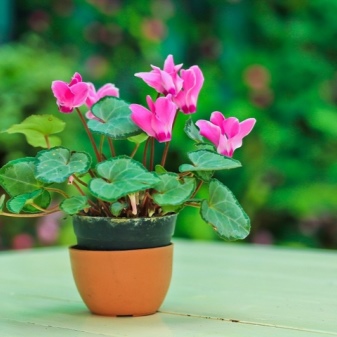
Description
The European cyclamen is a perennial flowering plant that belongs to the Primroses family. The native land of the herbaceous flower is Southern Europe. In climatic zones with warm and mild climates, cyclamen can be found in parks, gardens and street beds. V in regions with low temperatures, this flower is grown by gardeners as a houseplant and only in the summer is taken out into the street. Due to its beautiful appearance and delicate aroma, the flower is often called dryak or alpine violet.
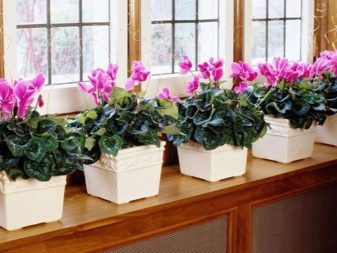
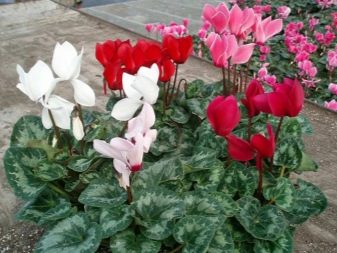
The root system consists of a bulb in the form of an elongated ball, on the surface of which roots grow. The maximum diameter of the tuber is 11 cm. The serrated leaf plate is shaped like a heart and is located on the petiole. The color of the upper side of the leaf is deep green, and the lower side is purple. The diameter of one flower does not exceed 20 mm and resembles a butterfly. The color palette of the buds ranges from pink to purple and purple.
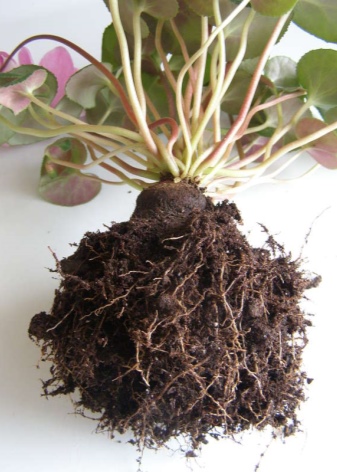
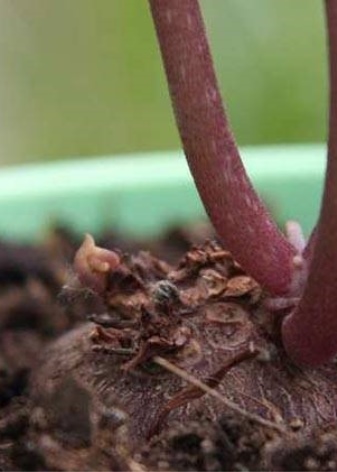
The flowering period lasts over 5 months. Flowers begin to form in mid-spring. A characteristic feature of cyclamen during flowering is the presence of a rich and pleasant aroma. Alpine violet is not only an ornamental plant, but also a medicinal one.
Alpine violet is not only an ornamental plant, but also a medicinal one. The chemical composition of its juice includes alkaloids, saponins, essential oil and astringent components that have anti-inflammatory and antiseptic effects.
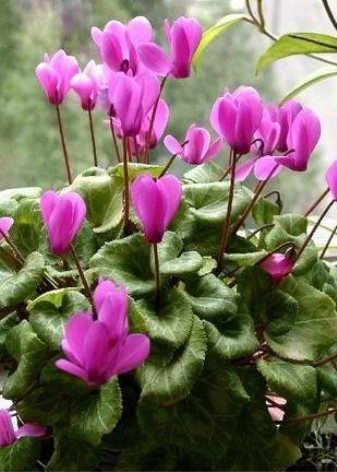
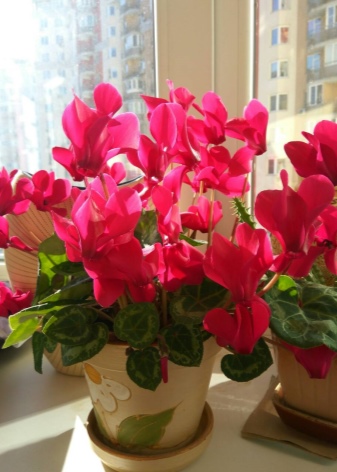
Cyclamen drugs are used to treat the following pathologies:
- gynecological diseases;
- neurological disorders;
- rheumatism;
- inflammation of the upper respiratory tract.
Alcohol rubbing with the plant is used to treat rheumatism and gout.
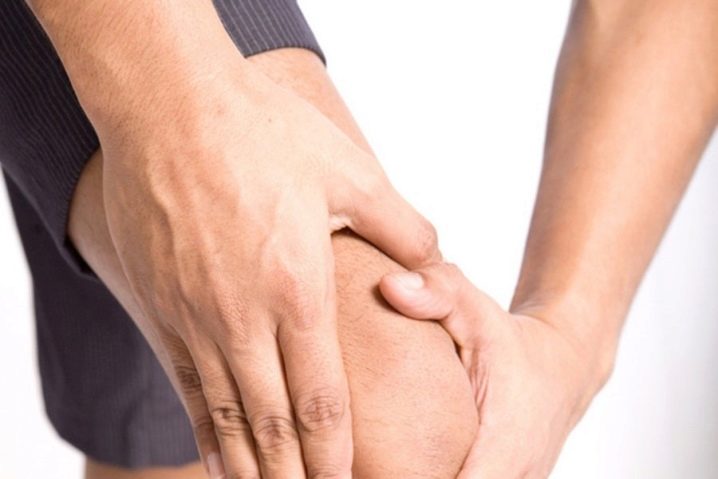
Due to the presence of poisonous substances in the roots, you should consult your doctor before taking medications.
Care
Only a healthy and strong flower can delight and surprise its owners for many years. Before buying this plant, you must carefully study its characteristics and basic rules of care.
- Botanists recommend placing cyclamen in well-lit areas. The plant feels comfortable on windowsills with windows facing east or west. In the case of placing a flower on the south side, it is necessary to create artificial shading, which will become an obstacle to the penetration of direct sunlight. Many housewives place flower pots on shelves and tables, near which artificial light sources are installed.
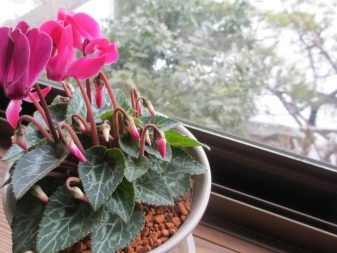
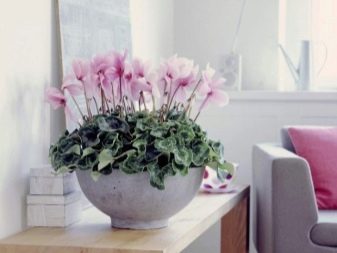
- The plant is not recommended to be placed in smoky rooms and in the kitchen. In summer, flower pots should be taken out to balconies and loggias, which have special shading canopies.
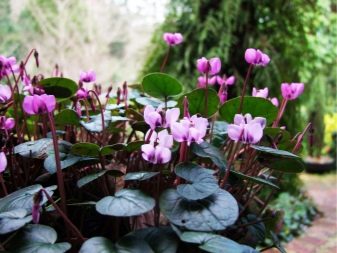
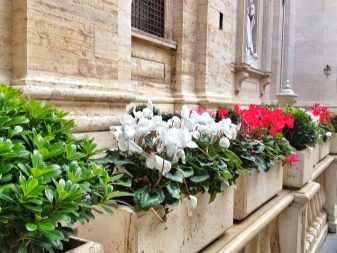
- The most comfortable temperature in spring, summer and autumn is + 18 °. In winter, the air temperature in the room should not exceed + 15 °.
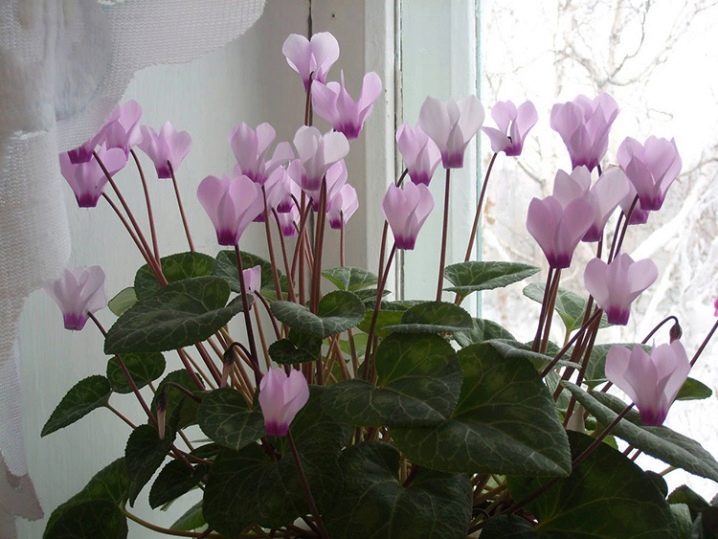
- During the period of active growth, the plant should be watered moderately and regularly. The plant has a negative attitude towards both waterlogging and drought. Watering is necessary only after the top layer of the soil has dried. Experts recommend moistening the soil through a sump, into which it is necessary to pour settled water at room temperature.
It is strictly forbidden to use tap water, which contains a large amount of heavy metal salts, chlorine and lime. During the dormant period, the number of waterings should be reduced to a minimum.

- The plant responds positively to additional nutrient input. In spring and summer, this procedure should be carried out once every 14 days, and in winter this event must be abandoned. Experienced gardeners recommend using complex mineral fertilizers for flowering indoor plants for feeding.
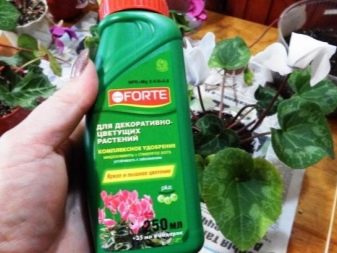
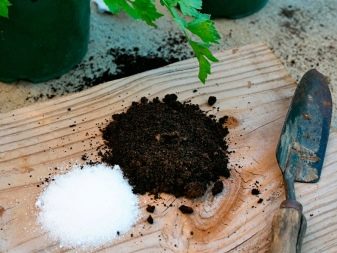
- For removing dry buds and foliage it is necessary to use the twisting method.

If the rules for caring for the European cyclamen are not followed, the following difficulties may arise:
- yellowing and falling foliage - low level of air humidity;
- wilting and rotting of inflorescences and bulbs - excessive soil moisture;
- falling off unformed buds - the introduction of an insufficient amount of nutrients.
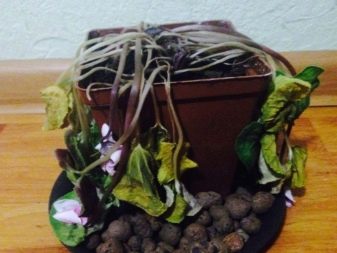
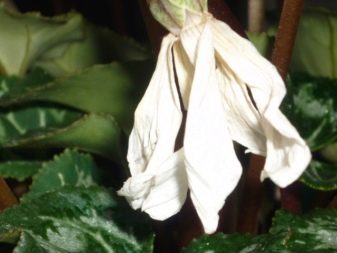
Reproduction
To obtain a new plant, biologists recommend using two methods of reproduction:
- rooting of daughter tubers;
- seeds.
Planting young bulbs - the easiest and fastest way to reproduce. For its implementation, it is necessary to separate small bulbs from the mother bush in the spring and plant them in special technical containers of a small size, the diameter of which is 4 cm larger than the size of the bulb. On sale you can find ceramic and plastic containers. Experienced flower growers recommend giving preference to ceramics.
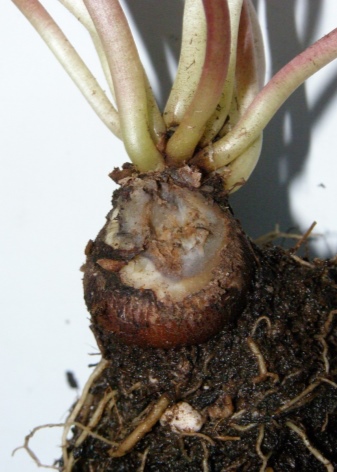
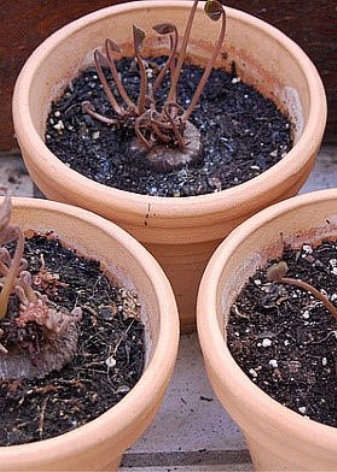
For planting, light airy nutrient soil with coarse sand is used, which must be completely covered with planting material.
You can use both a commercially available soil mixture and self-prepared nutrient soil.
To make it at home, you must mix in equal proportions:
- leafy ground;
- humus;
- coarse sand;
- organic peat.
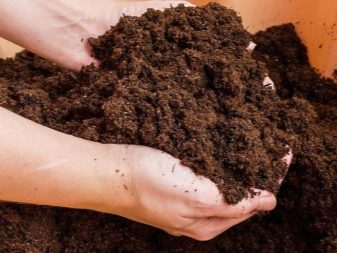
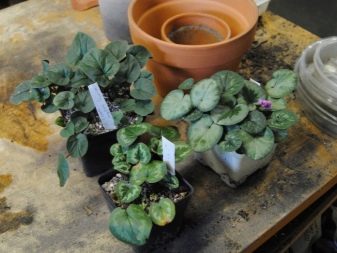
The resulting nutritional composition should have a low acidity level.
In the case of purchasing ready-made substrates, preference should be given to mixtures for bulbous flowers. To maximize moisture retention in the soil, florists recommend laying moss on the surface of the pot.
A prerequisite for planting a flower is the presence of a drainage layer at the bottom, which will prevent rotting of the tubers.
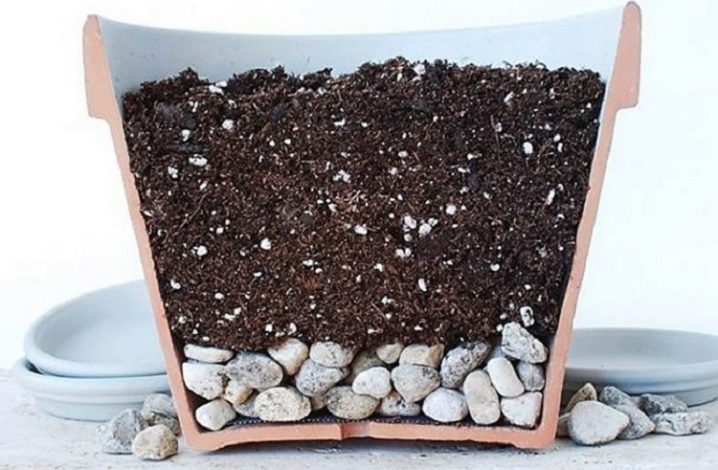
The plant does not need to be repotted frequently. The planting pot can be changed every 4 years. The most favorable time is the beginning of spring. To prevent mechanical damage to the root system, florists recommend using the transshipment method.
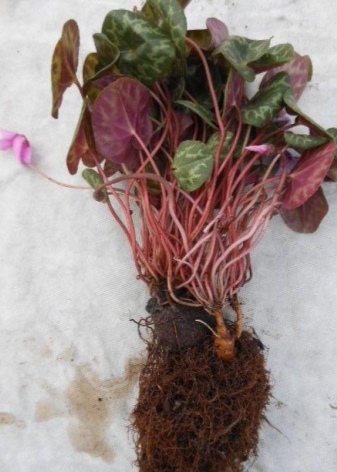
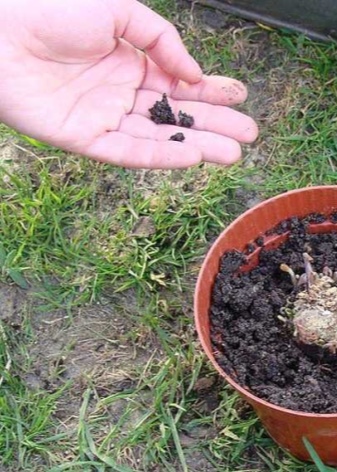
Planting seeds - a complex and time-consuming process that is very rarely used at home. The most suitable time for sowing seeds is the beginning of autumn. This method of obtaining a new flower is used by experienced breeders in specialized nurseries.
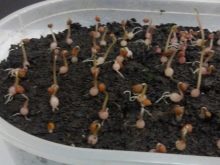
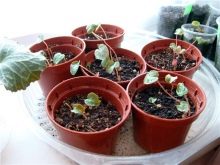
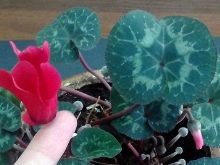
If you want to grow a plant from purchased seeds, they act step by step.
- Before planting seeds it is imperative to soak for 1 day in a special solution, which will increase the percentage of germination.
- Landing containers filled with organic peat, to which sand and vermiculite are added.
- Processed seeds it is necessary to spread out on the surface of the ground and sprinkle with a very thin layer of earth.
- To moisten the soil it is necessary to use a spray bottle.
- To increase germination the container must be covered with plastic wrap.
- Covering material can be removed only 30 days after germination.
- After the appearance 2 true leaves can be picked.
A young plant obtained from a seed will be able to please its owners with flowering only after a year.
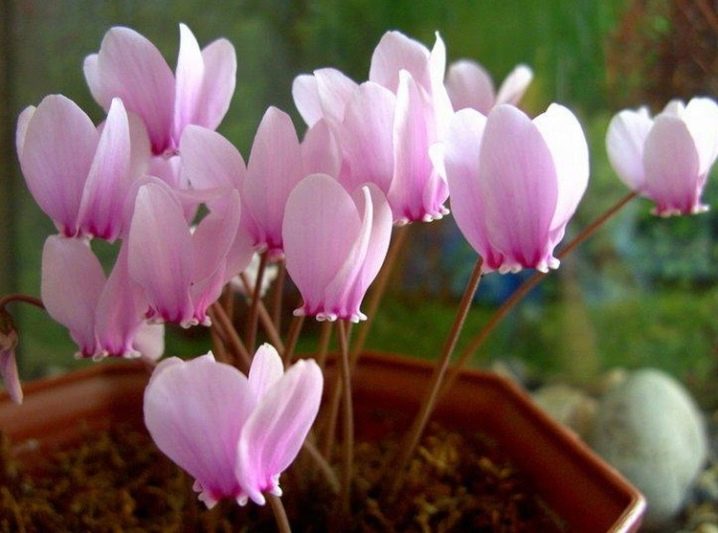
Diseases and pests
Like any plant, the European cyclamen is susceptible to a number of diseases and the negative effects of dangerous insects. Biologists distinguish several among the most dangerous diseases.
- Wet rot - a bacterial disease that provokes rotting of the bulb. Signs - wilting and drooping of leaf plates, the presence of an unpleasant odor from the flower. This disease is incurable. To prevent the spread of infection, the plant must be discarded.
- Blackleg - a fungal infection that invades the structure of the stem. Signs - yellowing of the tops of the leaf plates. To treat a flower, you must use special chemicals.
- Gray rot - a fungal disease, the spores of which are transmitted from a diseased plant to a healthy one through water and air currents. Signs - the presence of white mold on all parts of the plant, the rapid death of the affected areas. Before treating the flower with fungicides, all infected parts must be cut off.
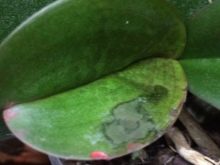
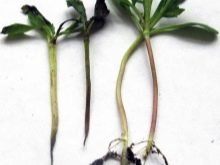

The most common pests that can lead to the death of cyclamen are the following insects:
- mite;
- thrips;
- aphid;
- shield.
Deformation of leaf blades and inflorescences, as well as the slow formation of new shoots and twisting of old stems are a sign of cyclamen damage. tick... The size of this insect does not exceed 0.4 mm, which greatly complicates its visual detection. Large clusters of mites are more like a dusty coating.
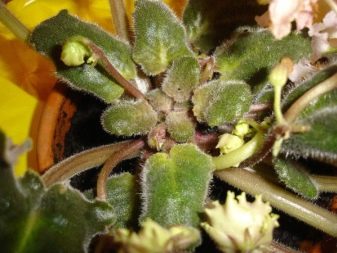
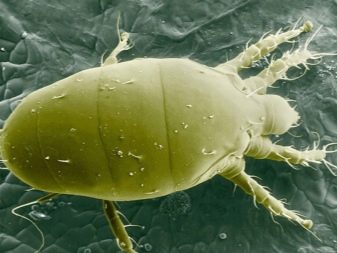
Professional gardeners recommend washing the leaf plates with liquid soap and treating the flower with special chemicals.
Aphid - the most common pest that sticks to the plant and takes all the juice from it. You can see the insect on the underside of the leaf. Before applying toxic substances to the plant, it is imperative to wash the leaf plates with soapy water.
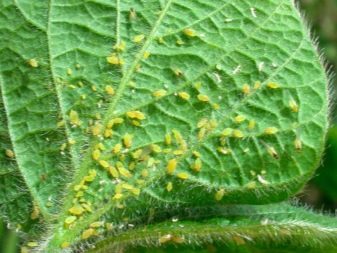
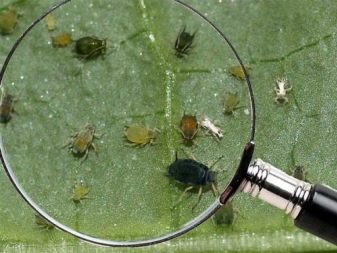
Shield - an immobile pest that looks like a dark spot on the leaf. The shield practically does not move and can be easily removed with a cloth soaked in rubbing alcohol. In the event of the appearance of young offspring, which actively moves along the stems and leaves, the flower must be treated with special insecticides.

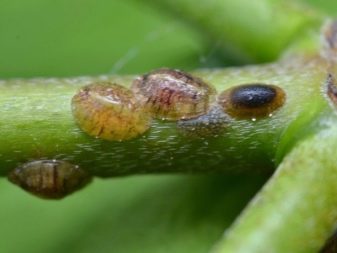
Black and white thrips - mobile pests that can move from one plant to another. The habitat of insects is inflorescences and leaves. Signs - the presence of dark spots on the sheet plate and its deformation. To destroy an insect, it is necessary to treat the flower with insecticides at least 3 times. A diseased plant must be placed in isolation from other flowers.
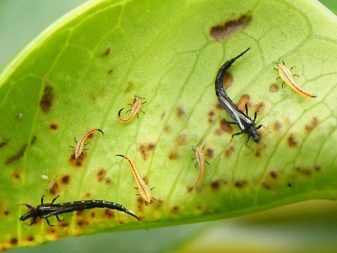

Upon detection elephant beetle it is imperative to transplant the flower into a new pot.

For a video about the European cyclamen, see the next video.







































































































The comment was sent successfully.